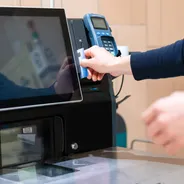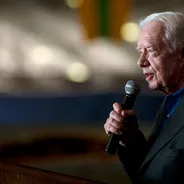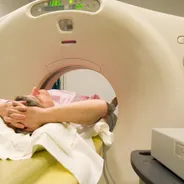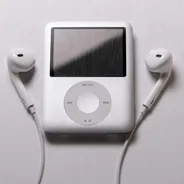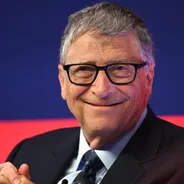At first glance, Arthur Ashkin appears to be a frail, old man. However, unbeknownst to those who pass him on the street, his frail body is home to one of the greatest minds of our time.
Last year, he won a Nobel Prize in physics for his role in developing technology which uses light to make small objects “levitate”. Halfway between a party trick and a confusing scientific truth, this technology also has very practical uses in biology, nanotechnology and spectroscopy. It has helped us understand how cholesterol-lowering drugs work, enabled the development of a malaria blood test and saved an untold number of lives.
Ashkin shared the prize, of which he was awarded one half, with fellow scientists Gérard Mourou and Donna Strickland. He was unable to attend the ceremony itself but his son received the award on the night, on his behalf.

Perhaps most intrinsically impressive was Ashkin’s new ability to hold and stretch DNA using a laser beam. “It surprised me. It would surprise anybody,” Ashkin explained to Business Insider. “I invented optical levitation.”
However, his new project has the potential to change the course of history. He is currently working on technology which uses geometry to capture and funnel light. Reflective concentrator tubes intensify solar reflections which, while sounding rather scientific, are actually incredibly cheap and may cost only pennies to create.
The technology is set to drastically improve the efficiency of solar panels or supersede current solar energy systems entirely. “I'm making cheap electricity,” Ashkin explains, adding that it will “save the world”.

While many countries are investing heavily in renewable energy initiatives, global infrastructure is still heavily reliant on fossil fuels and those in power are reticent to splash tax dollars on the initial outlay. However, Ashkin’s new technology could make solar energy both cheaper and more efficient.
His most recent discovery can be traced back to his previous work with lasers. As early as the 60s, Ashkin researched the properties of light at Bell Labs - in order to improve Bell’s communications. Ashkin’s colleagues were reportedly astounded when they realised what he was doing. Using laser beams to exert force, he effectively created “optical tweezers” with which he was able to manipulate small objects such as pond-based single-cell organisms.
Having grown up in Brooklyn during the Great Depression, Ashkin didn’t have access to many luxuries during his childhood - including books. However, he had one book called The Book of Knowledge: The Children's Encyclopedia (That Leads to Love of Learning). A recurring section was called "Wonder Why" and it inspired Ashkin's love of science. “Wonder why would say 'why is the sky blue?'” Ashkin states. “Then Wonder Why would tell you. I was fascinated, because I wanted to know how things worked.”

Years later, Ashkin was studying for his PhD at Cornell. It’s here that he met a chemistry scholar named Aline. “I was very shy, but I knew that this lady was special,” Ashkin explains. “So I had enough nerve to ask for her phone number.”
Having now been married for 64 years, Ashkin claims that - despite his work spanning physics, biology and chemistry - he never needed to take a chemistry classes because his wife is so knowledgeable on the subject. “I married her because she is smart!” he enthuses.
When he finally received a call from the Royal Swedish Academy of Sciences in Stockholm on 2 October last year, he thought it was a joke - because former US Secretary of Energy Steven Chu, had already shared the 1997 Nobel Prize for related research at Bell Labs. But Chu's work had built on Ashkin’s. Furthermore, in its various forms, it had now saved countless lives.

Ashkin holds almost 50 patents and has already filed the paperwork for his newest project. He hopes his work will soon be published in the journal Science. Ashkin is also confident that it will make an appearance on the Nobel radar. “And I'm gonna win too,” he teases.
However, what makes Ashkin’s current project most impressive is that he’s no longer using vast laboratories and millions of dollars of equipment. Out of view of his wife upstairs, he is merely “tinkering” in his New Jersey basement.







